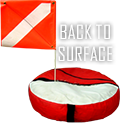ARTICLES WITH INFORMATION FOR WISCONSIN ANTIQUE BOTTLE COLLECTORS:::.
Articles with great information of interest for Wisconsin antique bottle collectors. Please, do not republish without expressed written permission from the original publisher or author.
- Several glass factories, mostly along the Fox River and Lake Michigan, where sand was available to make the "gummy metal," were started...and failed in Wisconsin. One such small factory, that made window glass, sprouted up in Omro in 1876. It failed the following year. No other glass factories were in existence in Wisconsin until the beginning of 1880, when Enoch Chase set up plans to build a factory in Bay View to produce bottles for local breweries. He built The Bay View Works, which housed two melting units, on his farm near the southern limits of Milwaukee, which was at Lincoln Ave. Dr. Chase retained full ownership o... Read Full Article
- Stoneware bottles were among the first bottles produced for Wisconsin brewers and merchants. The earliest were made in the 1850’s, and more began to appear in the 1860’s. The use of stoneware bottles peaked in the 1870’s, and by the 1880’s they began to fall out of favor. It appears that some were still being used even in the 1890’s, but by the turn of the century they had become obsolete. Stoneware bottles were made by hand, mostly turned on a potter’s wheel using imported clay. Some were made in plaster molds. Wet liquid clay, about the consistency of syrup, was poured into a mold. Th... Read Full Article
- The opening Chase Valley Glass Company marked the beginning of a 30-year era of glass manufacturing in Milwaukee. Although the Chase Valley works operated only one brief season, four successive glass works operated at the same location. The Chase Valley glass works also left behind a rich legacy of bottles and flasks for collectors. COMPANY HISTORY When Vermont native Dr. Enoch Chase settled at the site of present day Milwaukee in 1835, he was one of the first whites in the area and was Milwaukee's first practicing physician. Dr. Chase lived in Milwaukee and practiced medicine until the 1870s when health problems forced ... Read Full Article
- Wayne Kroll reasserts his super hero status for Wisconsin beer bottle collectors and brewery aficionados How quickly does hunting for and collecting artifacts evolve into a love for the history that makes the items more than just shiny/colorful knickknacks? Wisconsin’s Frontier Farm Breweries is for all of us who have reached that point in collecting. Wayne Kroll begins this book by defining what a Farm Brewery was. He rolls quickly into synapses of what it was to be European settler in rural Wisconsin when Wisconsin truly was on the edge of the known world. Sure people stare and wonder how the Druids built S... Read Full Article
- A few Saturdays ago I decided to go out and dig a privy pit. It was a great day for digging. Temperature was in the low 70's and there wasn't a lot of humidity. I had recently found a city that I had never dug in before and it had lots of old houses with plenty of age to them. So, I decided to go to that city and try my luck. I got there about 9:30 (I planned to be there sooner but over slept a bit). I proceeded to look for a "good" house. I tried a few but no one seemed to be home. After about 4 tries I finally found someone home. I began talking to the owner and at first I thought he was going to say no as he began to te... Read Full Article
- Editor opinion: For those of you who don’t know, John Wilson tumbled bottles as his full time job for over a decade. He knows what he's talking about and nobody can do a better job. He is so good people call bottles he has polished, "Wilsonized". If you have been cleaning your own bottles or if you intend to, take heed. I've seen some bottles of extreme rarity that were tragically over cut or over polished. My advice is, go easy tumble at slower speeds with less polish for a shorter period of time, or follow John’s instructions to the letter. DO NOT OVERCUT! John says about cutting with aluminum oxide or any ... Read Full Article
- "As you enter the door, you sniff what seems to be the perfume of a thousand roses, but after becoming accustomed to the laden atmosphere the odors are easily traced to the bottles of sarsaparilla on the adjacent shelf. The proprietor was found a typical German; round faced, good-natured, and at once made the news hunter feel that he was welcome." Milwaukee Sentinel - July 5, 1878. 0. Zwietusch is a very familiar name to diggers and collectors in the Milwaukee area. We find soda bottles with his name regularly around here. Styles range from long neck blob sodas to early hutch - a span of 30 years. There are also some very... Read Full Article
- Advice on privy digging techniques is plentiful these days. There are articles and bottle club programs on the subject. You can buy a booklet or video on how to get started. Most of them are quite good, but the authors seem unwilling to go beyond the rudimentary. They don't expose the advanced concepts that enable the best diggers to consistently find early, loaded privies. The reason they don't is fear of competition. After all, if everyone knew about and used these techniques, the supply of loaded privies could quickly disappear. This could be a mistake, but I'm going to expose some of these closely guarded secrets. To m... Read Full Article
- While I was at a local bottle show recently I talked with some fellow diggers and divers and was told of some rather nice finds that had been made in the past week. Talk of these finds got me to feeling rather ambitious. So, on the way home I decided to see if I could set my self up with a dig site for sometime in the next week or so. I went to a town that wasn't to far out of my way and started to bang on a few doors trying to get permission. Seems that Sunday morning most of the folks in the town I selected were either not home or don't answer the door! But, after a few tries I finally got permission to probe a rather la... Read Full Article
- Reprinted from book that was put together by Mike Reilly and I believe this originally appeared in an early news letter. The lead came from a phone call two weeks ago from one of my construction worker contacts. The guy knew I collected pottery and thought I might be interested in the excavation his company was doing off water Street in Milwaukee. He had found some pottery bottles with "funny names" like Liebscher, Schwartz, Lill, and Caegeer. Would I be interested? WOULD I BE INTERESTED?! Forty-five minutes later, I was in his garage closing a deal for eight Milwaukee pottery beers at $8 apiece. Since I had been so fair ... Read Full Article








